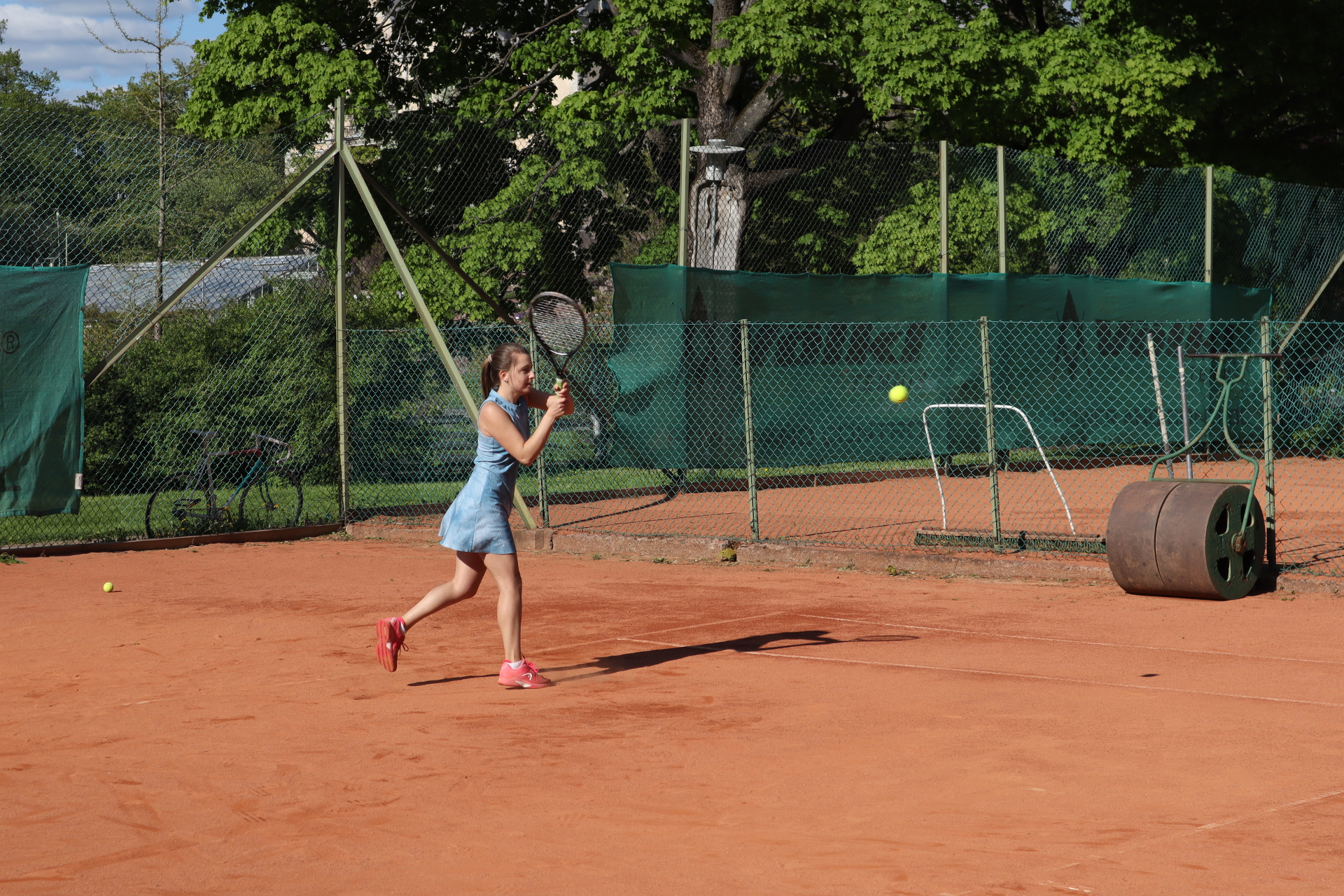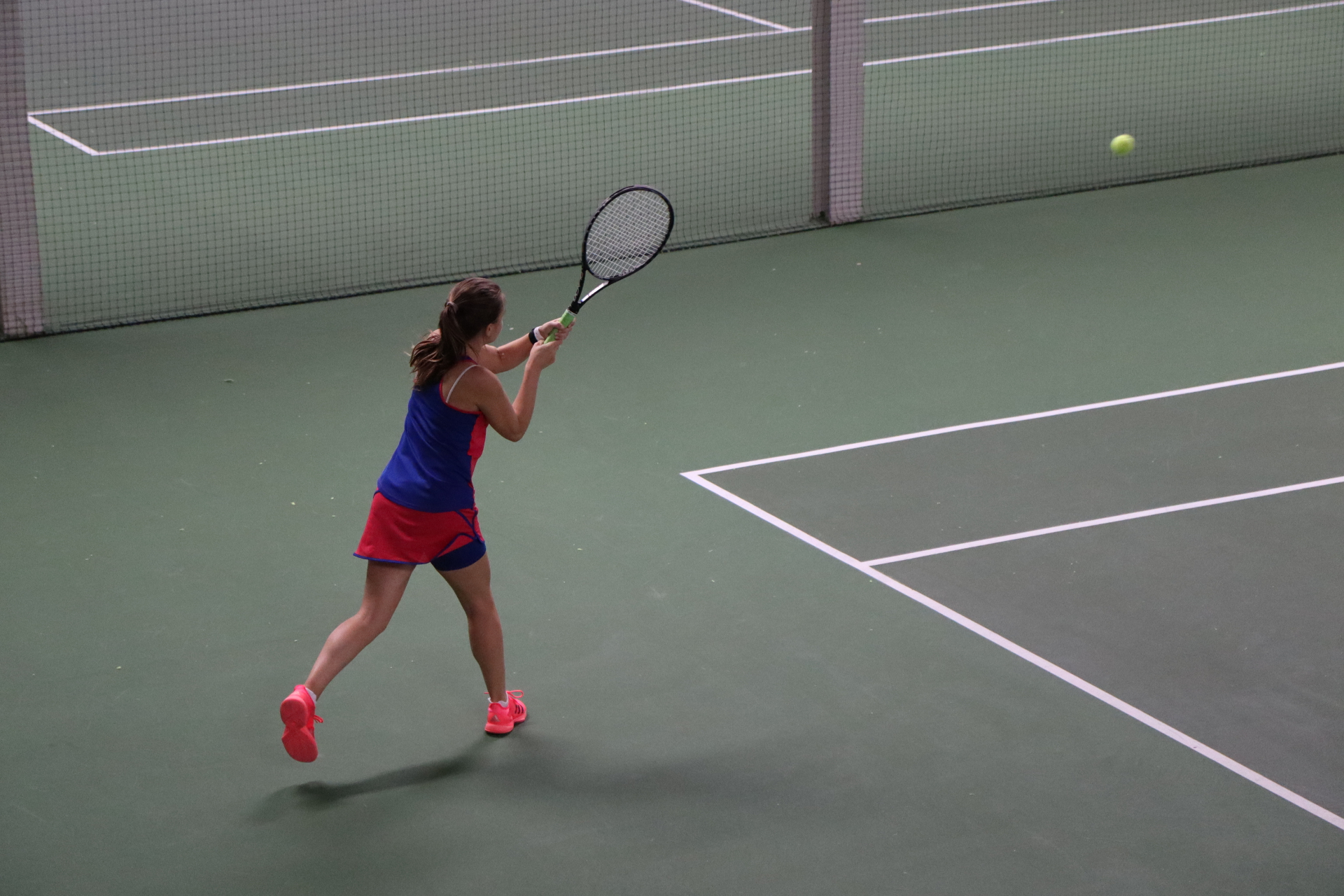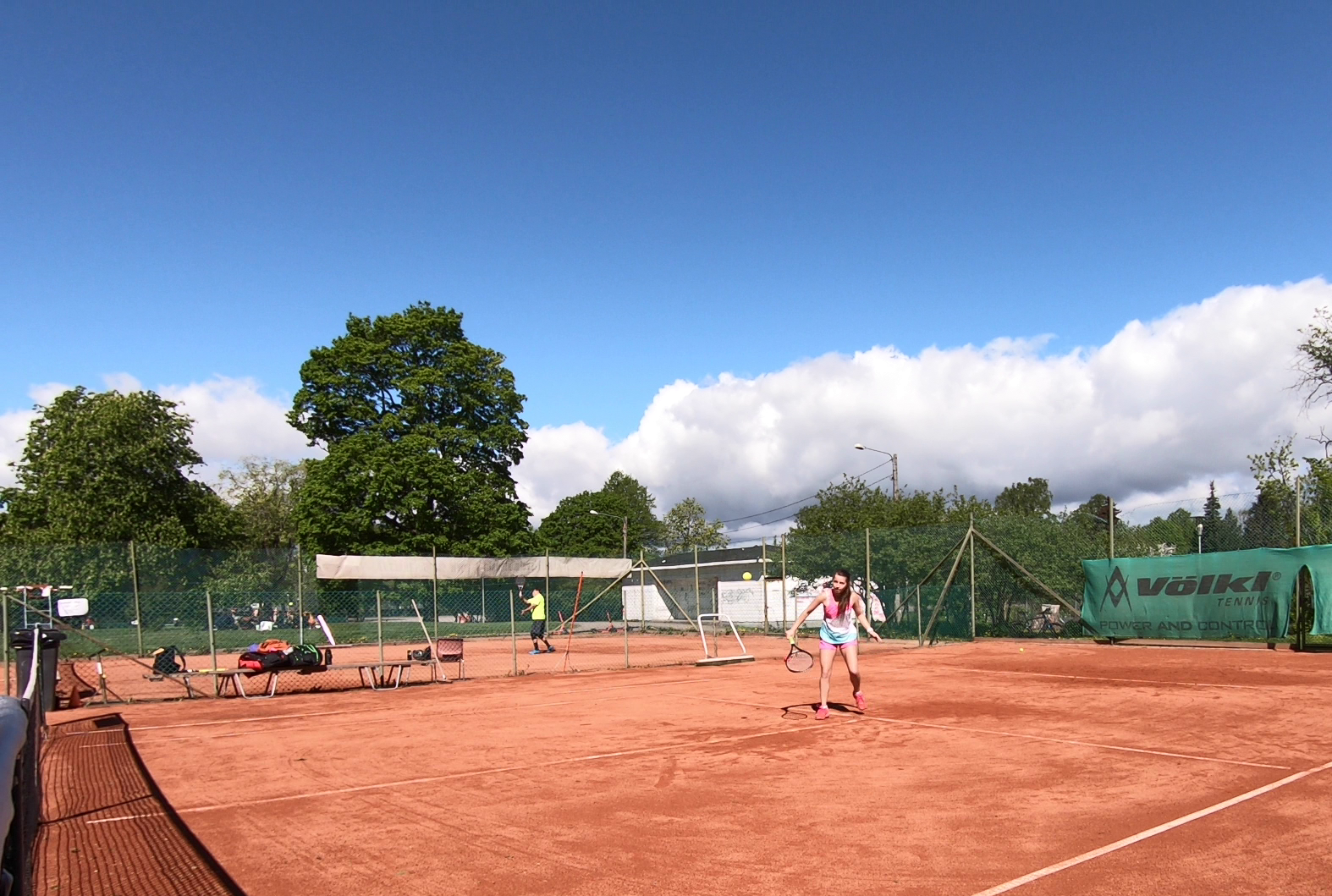Where to stand on the return of serve - and better cope with hard serves
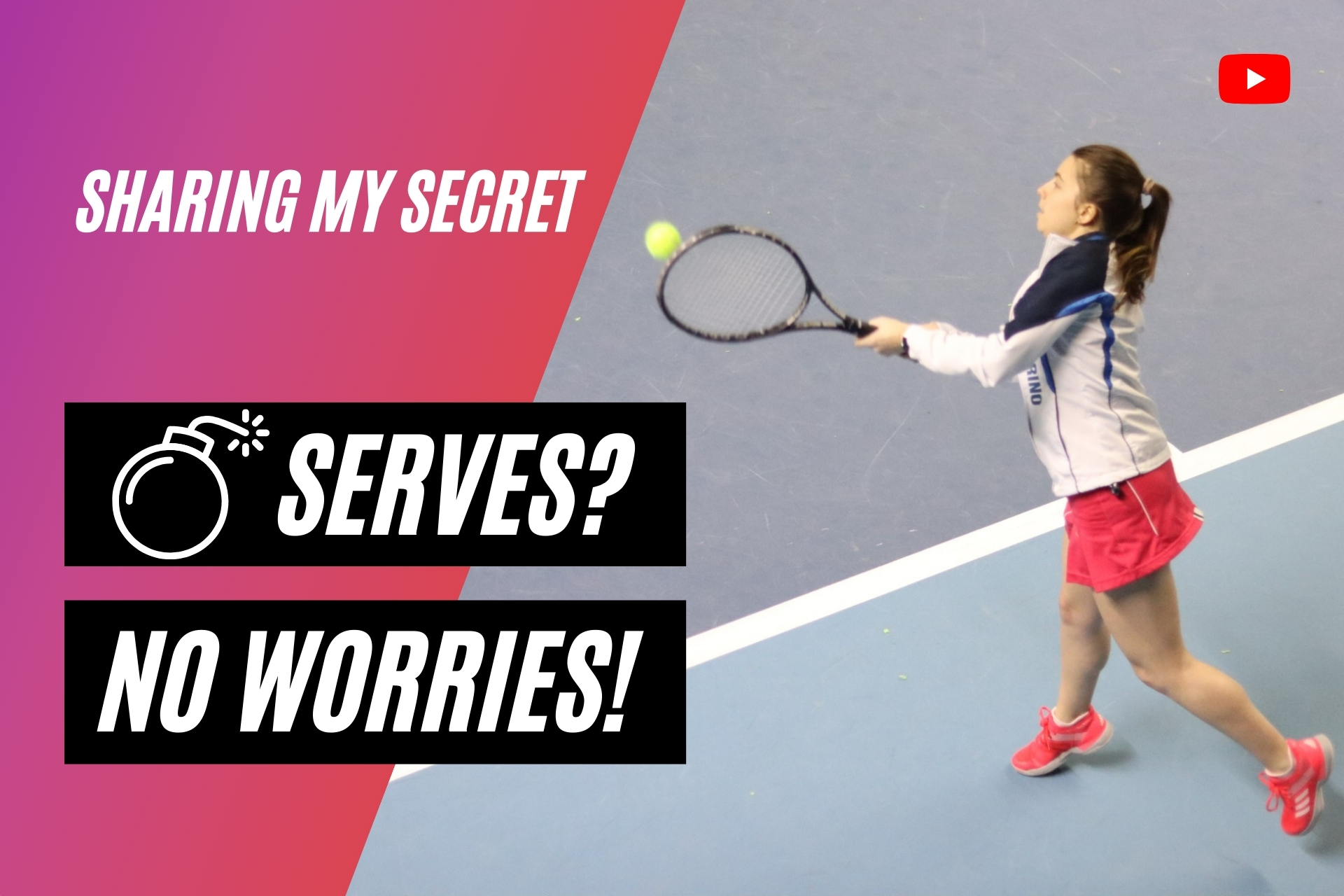
Have a hard time returning well placed, bomb serves? Well, who doesn't!
But here's some good news: by adjusting your position, you can actually increase the effectiveness of your return quite a lot. (Yes, even when your opponent seems to be serving one bomb after the other!)
And I haven't known this for forever, mind you. But since I tweaked a little bit where I stand when I wait for the serve, what-a-difference guys!
Btw if you’re new on this blog and have no clue about who I am, I'm Elena Margaria 👋🏻 and just like you, I'm on a mission to become the best tennis player I can 🥇. Even without a fancy team, or too much talent. Just with a huge desire to make it.
That's why Tennis Rematch exists: to share everything I learn along the way 🤓, so you can get better faster, and together we can prove that we can achieve anything we set our mind to 🔥.
Sooo... once again, here I am looking forward to sharing my little discovery with you, this time about the return of serve. I can't wait to hear what these little adjustments can do for your game!
You ready?!
Oh before we get right into it though, let me just talk about one more thing!
Did you notice the little hashtag #playToWin?
If you already know why it's there and what it stands for, then feel free to skip this section and go to the next. Permission granted 🤚🏻.
If not, then... here's the long story short.
That hashtag identifies the blogs that belong to my brand new, hopefully-long series called Play To Win, all about tennis strategy and must-do in very specific match situations, to make sure you get the job done, nice and easy!
Because here's the thing: technique is important and all you want, but it doesn't win you matches. Doing the right thing at the right time does.
Which is exactly why this series #playToWin exists. To collect all those tiny little strategy tips that make all the difference in the world 🌎, and yet are so underrated 🤫.
Like where to stand for a more effective return of serve. Or where to place your approach shot to have a better chance to win the point at the net.
But ok, enough about that.
Let's get to my recent discovery about the return of serve.
A couple of months ago, Dom (my coach) invites me to a practice. He doesn't tell me with whom (sometimes he acts so mysterious!), and when I get there and find out who's gonna be my practice buddy I'm like "WTF?!" .
I don't know who she is or how she plays, but she's so freaking tall she scares the hell out of me right away 😱!!
And don't laugh. I later find out she's 1.85m (6'1) tall. And I'm 1.58m (5'2) short!! (Same digits, big difference!) Wouldn't you be scared if you were me?!
Anyway... the practice goes super well, we have lots of fun and she's nice and everything, but her serve... her serve is like a bomb 💣! (Never under 170 km/h 😱)
In fact, while we warm up serves and returns just before playing some tiebreaks at the end of the practice, I keep repeating myself: "Ok, Elena. You're screwed. Either you find a way to return those bombs, or you find a way. You don't wanna be aced every other serve, do you?!"
So I start experimenting with different positions for my return of serve.
"Maybe, if I tweak a bit where I stand I'll have a better chance to catch those bombs of hers." I think.
Quite reasonable, isn't it?
📍 First, of course, I try my usual position: feet slightly behind the baseline, with split step on it or slightly inside.
The result?
AUCH, since the ball is no longer on the rise when I hit it, I can feel all those +170 km/h on my racket and oh boy if they're heavy 🥵.
Plus, when she hits a good angle there's no way I can get to the ball on time, it's just too fast!!
Ehm, maybe no. Need to try something else!
📍 So then, I take a few steps backward and go muuuch further back: feet well behind the baseline, with split step behind the baseline as well.
And guess what!
Yes, I do have more time to get to the ball, but I also have a bigger distance to cover when she puts the ball in the corner! So in reality, things get worse instead of better, and I get aced so often it feels unreal 🙈.
So no, that's not a good idea either. But then what?
📍 Yup, I collect all my courage and place myself well inside the baseline. (Quite scary, let me tell you 😨, but when the going gets tough the tough start playing, no?!)
And SBAM, there it is: the solution to my problem!
Who would have said, eh?!
I wouldn't have, I must admit it. I thought that the closer I got, the harder it would be to cope with those +170 km/h. But nope, it actually gets easier!
And now that I've been keeping that little trick in mind for a couple of months, I can tell you: that one step forward makes all the difference in the world!
And if you think about it, of course it does!
Moving your return of serve position forward has countless benefits.
Yes, it's true, when you stand closer you definitely have less time to react. But once you get your reactivity on point and get good at it... you can give your opponent such a hard time!
👍 You make it much harder for your opponent to ace you. Even if she has great angles with her serve, by standing closer you have a much better chance to get to the ball on time, as the distance you need to cover is shorter than if you were further back.
👍 You put pressure on your opponent. By standing closer you're sending a clear message to your opponent: that you're not afraid of her serve. And that can go a long way, trust me. She might feel threatened by your confidence and start doubting her serve, or she might take it as a challenge and try to overhit. The result? Unusual double faults just around the corner in both cases.
👍 You hurry your opponent. By standing closer and taking the ball earlier, you take precious time away from your opponent. So the faster she hits her serve, the faster she needs to get ready for your return. In practice, you steal her weapon and use it against her! And leave her wondering whether she should then serve slower or keep hitting her hard serve.
👍 You can find a winner or force an error right away. In fact, you don't need much else other than good reactivity to get a quick point with your return. By standing closer and taking the ball earlier, you literally set yourself up for a speedy return, no matter how clean you'll hit the ball. And as long as your ball lands in the court, you can be sure your opponent will have some trouble!
Soooo... What do you think? Is it worth it to stand a bit closer on the return of serve or not?!
I'm telling you: it 100% is!
And if you think it's a bit counterintuitive, then give it a try and see for yourself! You'll probably feel a bit uncomfortable at first, that's normal. Just grit your teeth! Before you know it you'll be able to return those serves that used to be aces, I promise!
That's all for this episode of #playToWin. If you found it helpful and would like to see more of these #playToWin blogs, click on the clap button below and let me know!
And if you have any Qs about this or other match situations, don't be shy and comment below! It always makes me happy to read your messages 💕.
Then you're one of us! We're a community of passionate and motivated tennis players who work hard every day 💦 to reach their goals, motivate each other 🔥 to keep going when things get tough and share their own experiences 💬 so everybody can get better faster.
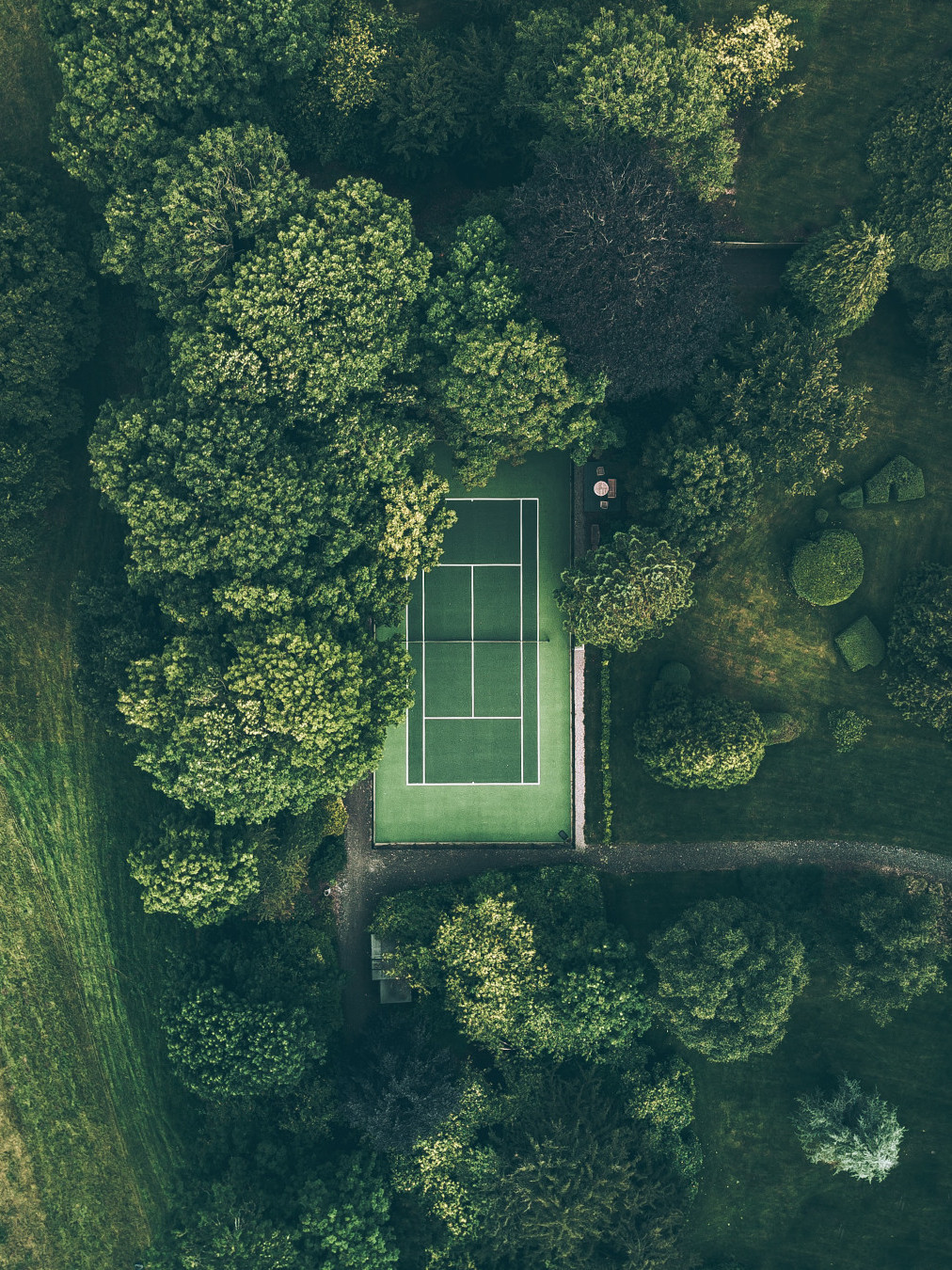
Hungry for more?
Enjoy these tennis bites, they’re just as good! 🤗👇
